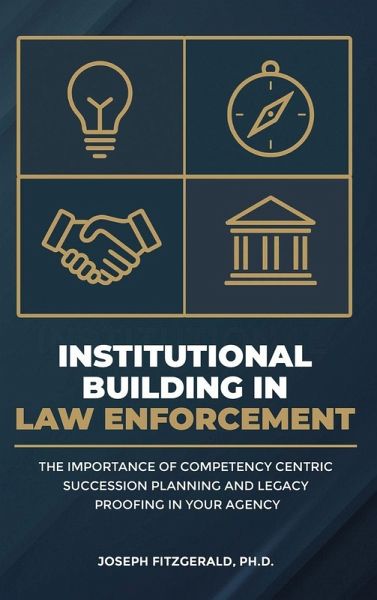
Institutional Building in Law Enforcement
The Importance of Competency Centric Succession Planning and Legacy Proofing in Your Agency

PAYBACK Punkte
13 °P sammeln!
Leadership succession in law enforcement is not just about replacing outgoing officials-it is about ensuring stability, continuity, and the long-term effectiveness of policing institutions. Securing the Future of Law Enforcement provides a comprehensive roadmap for agencies looking to develop, implement, and sustain structured succession planning models that cultivate future leaders while maintaining operational excellence. This book explores why succession planning is essential, addressing the risks of leadership gaps, the consequences of reactive promotions, and the challenges of modern poli...
Leadership succession in law enforcement is not just about replacing outgoing officials-it is about ensuring stability, continuity, and the long-term effectiveness of policing institutions. Securing the Future of Law Enforcement provides a comprehensive roadmap for agencies looking to develop, implement, and sustain structured succession planning models that cultivate future leaders while maintaining operational excellence. This book explores why succession planning is essential, addressing the risks of leadership gaps, the consequences of reactive promotions, and the challenges of modern policing. Drawing from real-world case studies, best practices, and structured frameworks, it presents proactive strategies for leadership development, mentorship programs, competency-based promotion systems, and diversity initiatives. Built around the ACE Framework (Action, Collaboration, Engagement) and the Police Officer Competency Index (POCI), this guide offers practical, evidence-based approaches to identifying, assessing, and preparing officers for leadership roles. It covers critical topics such as crisis leadership, generational leadership transitions, the integration of technology in succession planning, and community-driven leadership selection. Purpose: The purpose of this book is to provide law enforcement agencies with a strategic blueprint for developing future-ready leaders. It is designed for police chiefs, command staff, law enforcement trainers, and policymakers who recognize that building a strong leadership pipeline is essential to the long-term success of their departments and the trust they hold within their communities. By embracing structured succession planning, competency-based leadership models, and proactive mentorship, agencies can ensure that their next generation of leaders is equipped to navigate the evolving landscape of law enforcement with integrity, adaptability, and a commitment to public service. This book is not just about preparing for leadership transitions-it is about building a culture of continuous leadership development that sustains law enforcement agencies for decades to come.












